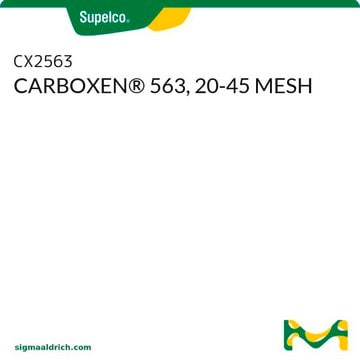LM1202
Avanti
17:0-20:4 PG
Avanti Research™ - A Croda Brand
Synonim(y):
1-heptadecanoyl-2-(5Z,8Z,11Z,14Z-eicosatetraenoyl)-sn-glycero-3-phospho-(1′-rac-glycerol) (ammonium salt)
About This Item
Polecane produkty
Postać
methanol solution
opakowanie
pkg of 1 × 1 mL (LM1202-1EA)
producent / nazwa handlowa
Avanti Research™ - A Croda Brand
stężenie
~10 μg/mL (Refer to C of A for lot specific concentration.)
Zastosowanie
lipidomics
metabolomics
Warunki transportu
dry ice
temp. przechowywania
−20°C
ciąg SMILES
[H][C@@](COP([O-])(OCC(O)CO)=O)(OC(CCC/C=C\C/C=C\C/C=C\C/C=C\CCCCC)=O)COC(CCCCCCCCCCCCCCCC)=O.[NH4+]
Opis ogólny
Zastosowanie
- has been used as an internal standard (IS) in lipid extraction from isolated pure mitochondria for mass spectrometry (MS) analysis
- has been used as an internal standard (IS) in liquid chromatography (LC)-MS analysis
- might be used in dual substrate (acyl-CoA and lysophospholipid) choice acyltransferase assay
- might be used for quantitative phospholipid analysis by MS
Działania biochem./fizjol.
Opakowanie
Informacje prawne
najczęściej kupowane z tym produktem
Hasło ostrzegawcze
Danger
Zwroty wskazujące rodzaj zagrożenia
Zwroty wskazujące środki ostrożności
Klasyfikacja zagrożeń
Acute Tox. 3 Dermal - Acute Tox. 3 Inhalation - Acute Tox. 3 Oral - Flam. Liq. 2 - STOT SE 1
Organy docelowe
Eyes
Kod klasy składowania
3 - Flammable liquids
Klasa zagrożenia wodnego (WGK)
WGK 2
Temperatura zapłonu (°F)
49.5 °F - closed cup
Temperatura zapłonu (°C)
9.7 °C - closed cup
Certyfikaty analizy (CoA)
Poszukaj Certyfikaty analizy (CoA), wpisując numer partii/serii produktów. Numery serii i partii można znaleźć na etykiecie produktu po słowach „seria” lub „partia”.
Masz już ten produkt?
Dokumenty związane z niedawno zakupionymi produktami zostały zamieszczone w Bibliotece dokumentów.
Nasz zespół naukowców ma doświadczenie we wszystkich obszarach badań, w tym w naukach przyrodniczych, materiałoznawstwie, syntezie chemicznej, chromatografii, analityce i wielu innych dziedzinach.
Skontaktuj się z zespołem ds. pomocy technicznej










